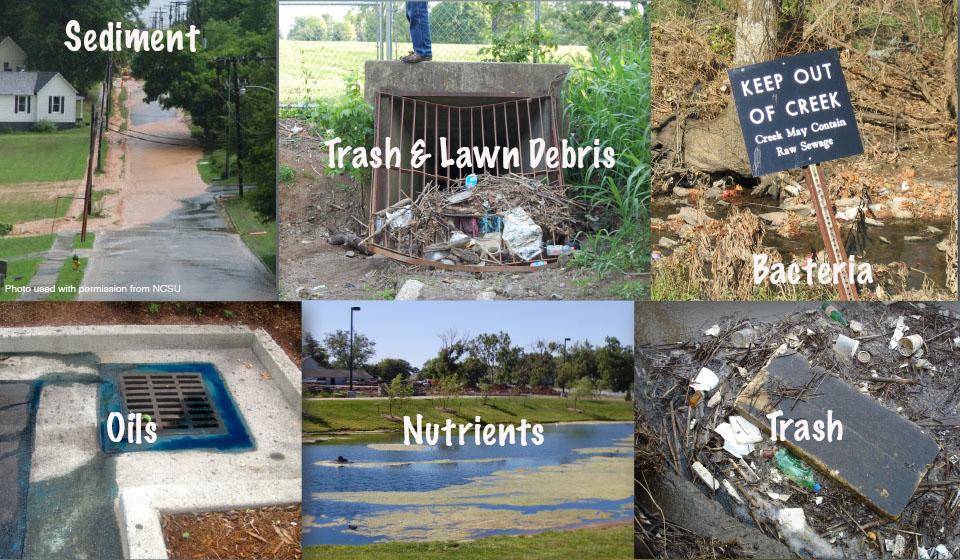Stormwater - Issues & Impacts

What are the impacts?
- Sediment - Sediment enters stormwater when rainwater flows across bare soil. Soil particles become entrained in the runoff and are carried to streams. Sediment reduces water clarity, impedes aquatic plant growth and destroys aquatic habitats
- Nutrients - In urban environments the two largest contributors to nutrients in stormwater runoff are pet waste and fertilizer. Excess nutrients cause algae overgrowths or algal blooms which may be toxic to humans and pets and reduce water oxygen levels for fish and other aquatic organisms. (Learn more about residential nutrient management)
- Bacteria and pathogens - Human and animal waste (pets and wildlife) contribute bacteria and pathogens to stormwater. Animal waste is carried to the storm sewer system by surface runoff. Human waste may enter the storm sewer system due to aging and failing infrastructure, sanitary sewer overflows, and inappropriately maintined septic systems. In excess, these bacteria and pathogens cause illness and result in closing of swimming areas and impairment of streams that limits other recreational use.
- Trash and debris - Stormwater runoff picks up trash and pollutants from streets and parking lots. These are carried through the storm sewer system and into our waterways. Trash may choke or suffocate wildlife and is unsightly.
- Oils, chemicals, and other pollutants - From leaking automotive fluids to paint brushes rinsed out in the driveway, any chemical that is not properly stored, used, or disposed of has the potental to end up in the storm drain. Pollutants and chemicals alter water chemistry, diminishing water quality that supports many aquatic organisms.
There are economic consequences as well. Many communities draw their drinking water from surface water sources. Poor surface water quality results in increased drinking water treatment costs which is passed on to the consumer. Communities relying on water resources for recreation and tourism trade are also vulnerable if deteriorated water quality results in bans on swimming and other water contact activities.
Learn more about eutrophication and the ecological impact of excess nutrients in this video.
https://www.youtube.com/watch?v=B6d7y5HOEQs
To protect water quality, the EPA regulates municipal separate storm sewer systems (MS4s) in communities with a population >10,000 through discharge permits. There are 106 regulated MS4 communities in 32 Kentucky counties. Many of these communities impose a stormwater fee to offset the cost of improving infrastructure and conducting education and monitoring programs.
